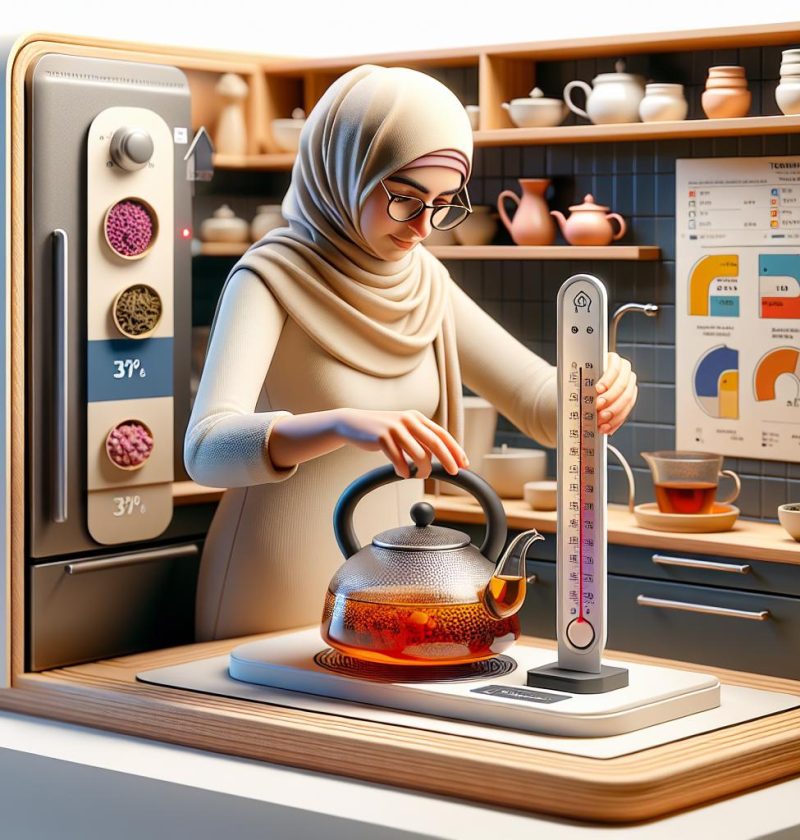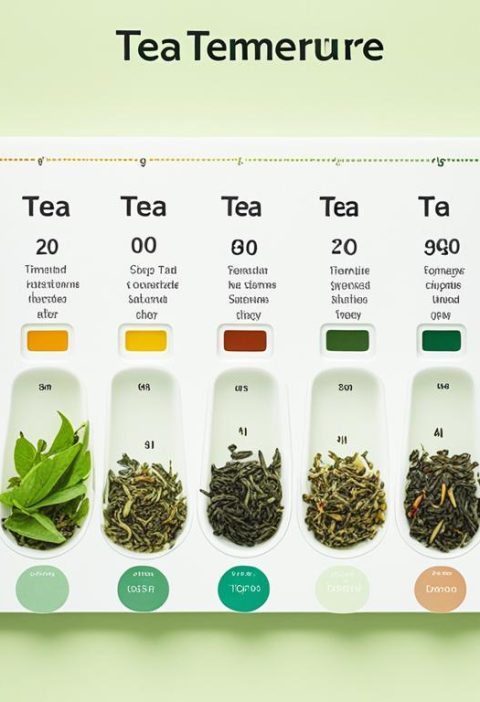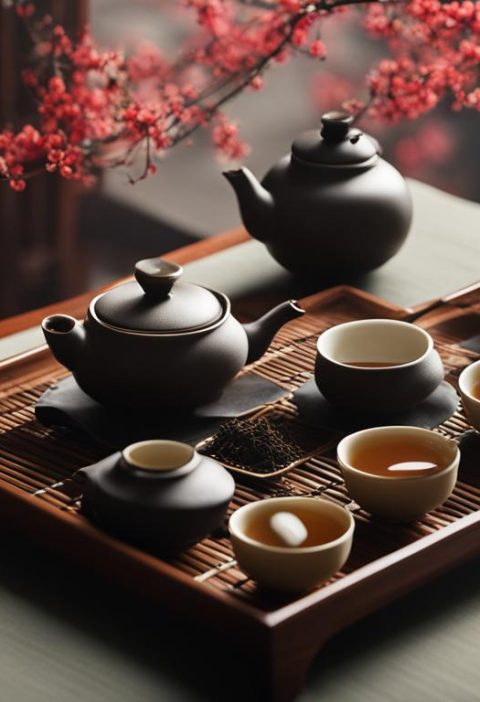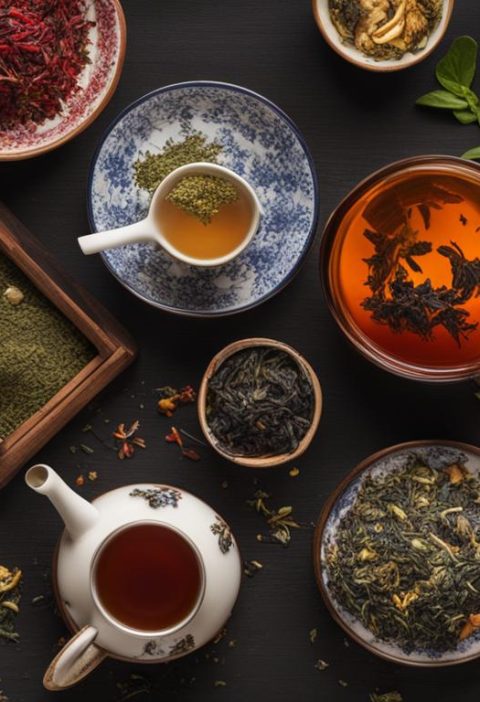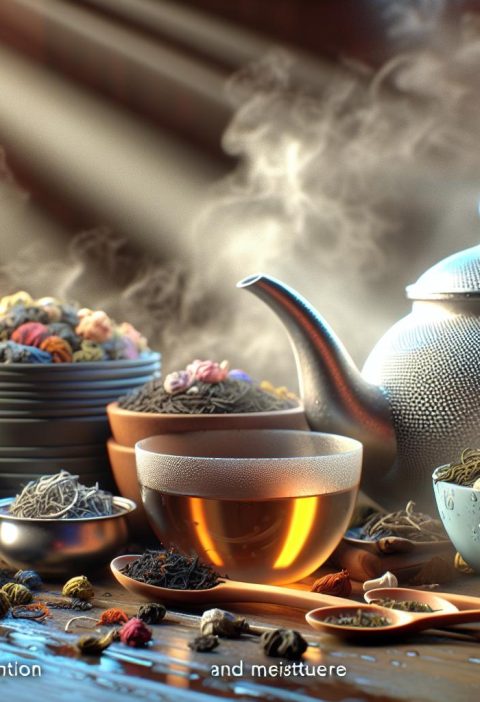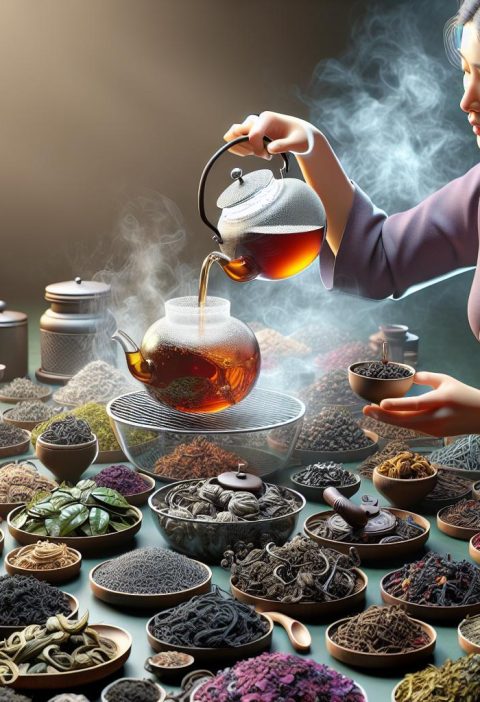When it comes to enjoying a soothing cup of tea, getting the steep temperature just right can make all the difference in the world. We’ve all experienced a brew that’s either too weak or too bitter, leaving us yearning for that perfect balance of flavors. Fear not, as we’re here to guide you through the art of finding your ideal tea steep temperature. With a few simple tips and tricks, you’ll be savoring the perfect cup of tea in no time.
Understanding the impact of steep temperature on your tea is essential for unlocking its full potential. Different types of tea require specific temperatures to bring out their unique flavors and aromas. Whether you prefer a delicate green tea or a robust black tea, knowing the right steep temperature is the key to a truly enjoyable tea-drinking experience. Let’s delve into the world of tea steeping and discover how temperature plays a crucial role in achieving that perfect cup.
Join us on a journey to unravel the mysteries of tea steeping temperatures and elevate your tea-drinking ritual to new heights. By mastering the art of steeping at the optimal temperature, you’ll be able to extract the full range of flavors from your favorite teas. Get ready to embark on a flavorful adventure as we explore the nuances of tea steeping and empower you to brew the perfect cup every time.
Understanding the Importance of Steep Temperature
When it comes to brewing the perfect cup of tea, the steep temperature plays a crucial role in unlocking the flavors and aroma unique to each tea variety. Understanding the significance of steep temperature can elevate your tea-drinking experience to new heights. Let’s delve into why mastering the art of steeping at the optimal temperature is essential for tea enthusiasts at all levels.
For Beginners: Fundamentals of Steep Temperature
- Tea Types: Different types of teas, such as green, black, oolong, and herbal teas, require specific steep temperatures to bring out their best flavors.
- General Guidelines: As a beginner, aim to start with 175°F-185°F (80°C-85°C) for green teas, 200°F (93°C) for black teas, and 208°F (98°C) for herbal teas.
- Flavor Impact: Steeping at the right temperature ensures that you don’t end up with a bitter or flavorless cup of tea, enhancing your overall tea-drinking experience.
For Intermediate Tea Enthusiasts: Fine-Tuning Your Brew
- Experimentation: Intermediate tea drinkers can start exploring a wider range of steep temperatures to discover how they affect the taste profiles of different teas.
- Tea Kettles: Investing in a quality variable temperature electric kettle can help you achieve precise steep temperatures for various tea types.
- Optimal Results: For nuanced teas like white or delicate green teas, consider steeping at 160°F-175°F (71°C-79°C) to bring out their subtle flavors effectively.
- Precision Brewing: Experts in the tea world understand the impact of even a few degrees in steep temperature on the final taste of their tea.
- Tea Accessories: Utilize tools like digital thermometers or smart kettles to achieve pinpoint control over steep temperature.
- Specialty Teas: Delve into the world of rare and exotic teas that require specific steep temperatures, such as 180°F (82°C) for oolong teas or 212°F (100°C) for brewing pu-erh teas.
Different Temperatures for Different Types of Tea

For Beginners: Understanding the Basics
- Green Tea
- Optimal steep temperature: 160-180°F
- Delicate flavor; avoid boiling water
- Black Tea
- Optimal steep temperature: 200-212°F
- Robust flavor; boiling water ideal
- Herbal Tea
- Optimal steep temperature: 205°F
- Varies based on the herbs used; usually boiling water works
For Intermediate Tea Enthusiasts: Exploring Variations
- White Tea
- Optimal steep temperature: 180-190°F
- Light flavor; avoid boiling water for best results
- Oolong Tea
- Optimal steep temperature: 190-200°F
- Semi-oxidized tea; find the right balance in water temperature
- Pu-erh Tea
- Optimal steep temperature: 200-212°F
- Fermented tea; boiling water preferred for strong infusion
- Matcha Tea
- Optimal steep temperature: 175°F
- Requires meticulous preparation for the perfect consistency
- Yellow Tea
- Optimal steep temperature: 180-190°F
- Rare tea type requiring precise steeping conditions
- Blooming Tea
- Optimal steep temperature: 185°F
- Hand-tied flowering teas; precise water temperature crucial
| Tea Type | Optimal Steep Temperature |
|---|---|
| Green Tea | 160-180°F |
| Black Tea | 200-212°F |
| Herbal Tea | 205°F |
| White Tea | 180-190°F |
| Oolong Tea | 190-200°F |
| Pu-erh Tea | 200-212°F |
| Matcha Tea | 175°F |
| Yellow Tea | 180-190°F |
| Blooming Tea | 185°F |
Tips for Achieving the Perfect Steep Temperature
When it comes to brewing the perfect cup of tea, getting the water temperature just right is crucial. Here are some tips tailored for every level of tea enthusiast:
For Beginners: Mastering the Basics
- Invest in a Kettle: Start with a good quality kettle with temperature control to ensure precision.
- Temperature Guide: Follow a temperature guide for different types of tea to avoid bitterness or lack of flavor.
- Use a Thermometer: For beginners, using a thermometer can be a helpful tool to hit the ideal temperature range.
- Patience is Key: Allow the water to cool down for a few minutes after boiling before pouring it over the tea leaves.
For Intermediate Tea Enthusiasts: Enhancing Your Brew
- Experiment with Steeping Times: Adjusting steeping times in addition to temperatures can bring out different flavor profiles.
- Consider Electric Kettles: Electric kettles with variable temperature settings can offer convenience and accuracy.
- Tea Thermos: Invest in a tea thermos to maintain the optimal temperature while steeping on-the-go.
- Tea Infuser Temperature Chart: Use a temperature chart specific to different teas to achieve the best results.
- Art of Hand Cooling: Master the technique of hand cooling to bring the water temperature down rapidly for delicate teas.
- Water Quality Matters: Use filtered water to enhance the taste of the tea without any interference from impurities.
- Teapot Preheating: Preheat your teapot to maintain the desired temperature throughout the steeping process.
- Tea Brewing App: Utilize tea brewing apps that provide temperature recommendations for various tea types.
By following these tailored tips based on your expertise level, you can ensure that every cup of tea you brew hits the perfect steep temperature, unlocking the full potential of flavor in every sip.
Factors to Consider When Steeping Your Tea
Tea steeping is an art that requires attention to detail to extract the best flavors. Understanding the factors that influence the steeping process can help you achieve the perfect cup. Below, we break down essential considerations for steeping your tea, catering to beginners, intermediate enthusiasts, and experts.
For Beginners: Mastering the Basics
- Invest in a temperature-controlled kettle.
- Follow a tea temperature guide for different types of tea.
- Use a thermometer to monitor the water temperature accurately.
- Practice patience while waiting for the tea to steep.
For Intermediate Enthusiasts: Enhancing Your Brew
- Experiment with steeping times to adjust the strength of your tea.
- Consider using an electric kettle for more precise temperature control.
- Invest in a tea thermos to keep your tea warm for extended enjoyment.
- Refer to a tea infuser temperature chart for optimal results.
- Try the hand cooling method to cool down the water quickly for delicate teas.
- Use filtered water to avoid any impurities affecting the tea flavor.
- Preheat the teapot before steeping to maintain the temperature.
- Utilize tea brewing apps for personalized brewing recommendations.
By keeping these factors in mind and tailoring your approach based on your expertise level, you can elevate your tea brewing experience to new heights. Remember, the perfect cup of tea is just a few considerations away.
Enhancing Your Tea-Drinking Experience with the Right Temperature
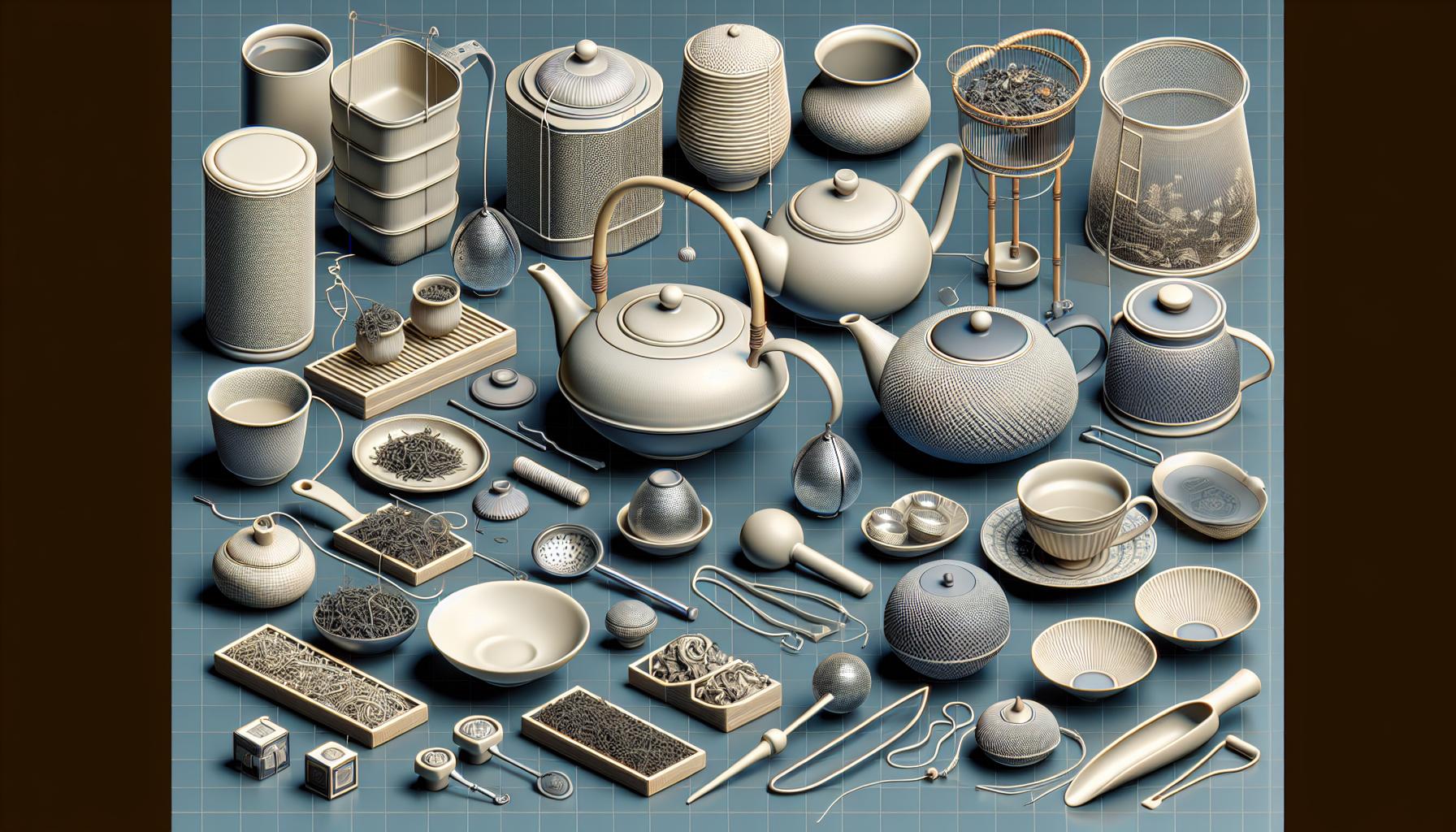
For Beginners: Mastering the Basics
- Start by investing in a temperature-controlled kettle to make the process easier.
- Follow a tea temperature guide to ensure you’re steeping at the right heat.
- Use a thermometer to monitor the water temperature accurately.
- Remember, patience is key to achieving the perfect cup.
For Intermediate Enthusiasts: Elevating Your Brew
- Experiment with steeping times to discover your preferred strength and flavor.
- Consider upgrading to an electric kettle for more precise temperature control.
- Invest in a tea thermos to enjoy your favorite brew on the go.
- Refer to a tea infuser temperature chart for optimal results.
- Practice hand cooling to prevent delicate teas from getting burnt.
- Use filtered water to eliminate impurities that can alter the taste.
- Preheat your teapot before brewing for a more consistent temperature.
- Utilize tea brewing apps for detailed brewing profiles and recommendations.
By customizing these tips based on your expertise level, you can enhance your tea-drinking ritual and savor the ideal cup of tea.
Conclusion
Mastering the art of steeping tea is a journey that evolves with experience. By tailoring our approach to tea brewing based on our expertise level, we can unlock the full potential of each cup. Investing in the right tools, experimenting with steeping times, and incorporating advanced techniques can transform a simple act into a ritual of precision and delight. Whether we are beginners seeking guidance or experts refining our craft, the key lies in understanding the nuances of temperature control and its impact on flavor. With patience and practice, we can elevate our tea-drinking experience to new heights, savoring the perfect cup of tea with each steep.
